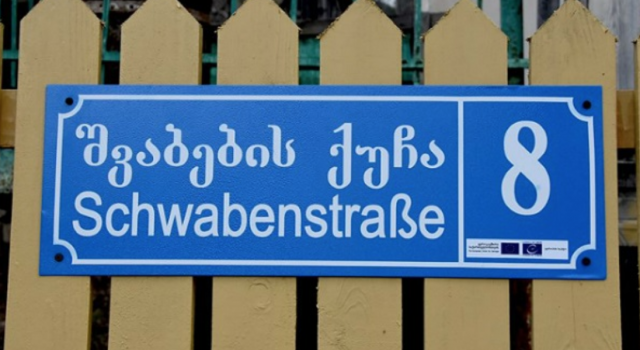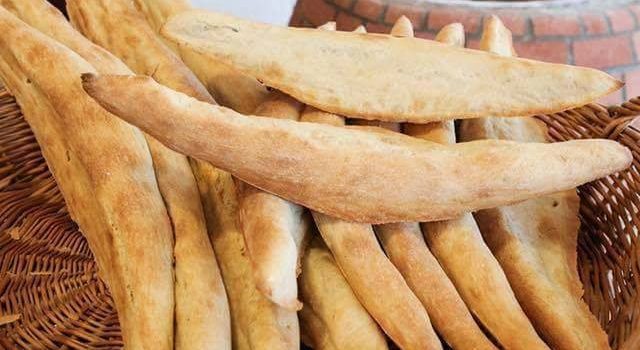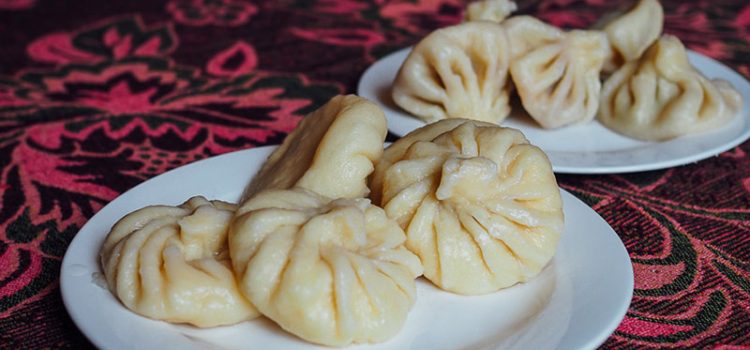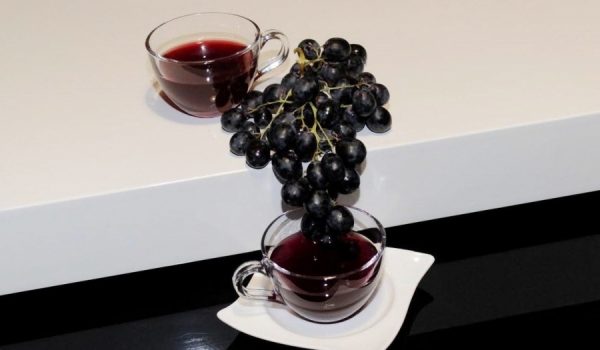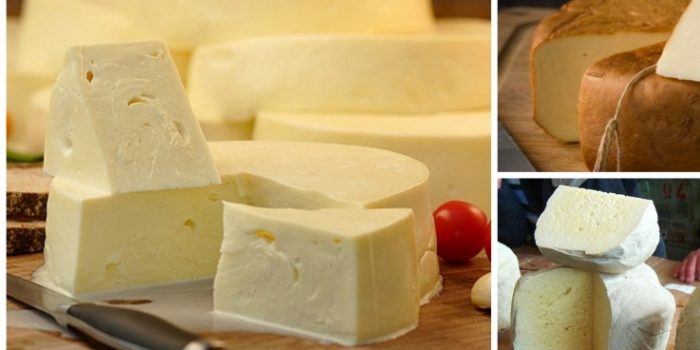Street Name Commemorates German Heritage in Georgia
The Union for the Protection of German Cultural Heritage in the South Caucasus has announced that Joseph Stalin Street in Asureti is now called Schwabenstrasse (Schwabian Street).
Around 1400 German families settled in Kvemo Kartli in Georgia after the Russian Tsar Aleksandr I invited foreigners to live in Transcaucasia.
His 1804 law allowed foreigners to make use of land plots and cultivate them. They were also tax-exempt and not required to complete military service.
The German families settled in Elizabethal settlement, named after the Russian Tsaritsa Elizabeth Alexeievna. Many of the families who emigrated to Georgia were Swabians. They also settled in Tbilisi and Abkhazia.
Source: Georgiatoday.ge, By Amy Jones
Photo: Georgiatoday.ge
Uplistsikhe cave-town is named among 115 fairy tales villages of the world
The magazine “Architecture Desigh” has introduced the world’s 115 fabulous villages, which are distinguished by landscape, culture and aesthetic characteristics.
In the list of fairy tales villages there are beautiful villages from 115 countries. The list also includes the oldest, beautiful, Georgian, cave and historical town – Uplistsikhe.
In the list there are other wonderful places, which are in Germany, Japan, Austria, China and other countries.
Source: Agora.ge
Tbilisi Open Air Festival 2019
Music breaks free…
Yesterday, Fabrika hostel’s Jungle Room hosted the official press conference of the eagerly awaited Tbilisi Open Air Festival. The annual event will take place on the 21st, 22nd and 23rd of June at Lisi Wonderland for its 10th anniversary.
The organizers launched the event and thanked their sponsors, TBC Bank being the main one. Everyone was waiting for the official line up that disclosed the festival’s headline Franz Ferdinand. He will be on the main stage on the Friday night, with the local MokuMoku as the support band. They also announced the coming of famous UNKLE, Tobias, David August and the Freedom Fighters, among many others.
The watchword of the gathering is Freedom, and its founder Achiko Guledani explains why: “This area is for everybody, this is a free area where different people can love each other, be together, and not be bothered by each other’s existence, rather it is quite the opposite. This is what Tbilisi Open Air is.”
This festival has been a go-to event in the country since 2009, when they held a very successful first edition. At that time, it was the largest scale festival to ever take place in Georgia. Since then, the festival has been growing and each year welcomes very famous international artists.
The goal of the festival is to host international as well as local musicians and offer a large range of musical genres to the public. People can enjoy high quality music as well as visual arts, which creates a complete and magical experience. The aim is for people to feel like they are in a world apart, where happiness and freedom rule. And precisely, for its 10th anniversary, the slogan is “10 years of equality and diversity”. Thousands of people from different backgrounds, origins and opinion will be able to gather one more time peacefully in this delirious environment.
We cannot wait to discover the surprises in store at the 10th anniversary edition!
Source: Georgiatoday.ge , By Gabrielle Colchen
Untitled Gallery to be Opened in Tbilisi
Back in 2018, The Guardian named Tbilisi one of the top 40 most attractive destinations in the world. It’s beyond doubt that Georgian food and its hospitality have a lot to do with it. But it’s also undeniable that Tbilisi becoming more and more chic through the looking glass of contemporary art culture is the needed cherry on top.
On March 30, at 6:00 PM, an Untitled Gallery will open in Tbilisi. The location of the gallery is 17 Ivane Machabeli street – in one of the most charmingly historical buildings in Tbilisi. The goal of the gallery is to bring the contemporary artists of the South Caucasus together and popularize them to a wide audience while connecting people and art.
Untitled Gallery promises us lots of interesting future projects, workshops, artist talks, presentations and other social activities to support peace, sustainability and minority right in the region.
As for the opening, Untitled Gallery will be hosting Georgian, Armenian, and Azerbaijani artists. Delicious Georgian wine will also be offered to visitors at the event.
Source: Georgiatoday.ge; By Nini Dakhundaridze
Khachapuri among 100 best-rated dishes on TasteAtlas
Georgian traditional dish Khachapuri is one of the best-rated dishes on TasteAtlas. The website discovers local ingredients, traditional dishes, and authentic restaurants throughout the world.
khachapuri is the most famous dish in Georgia. The pastry is traditionally topped with melted cheese, eggs and butter. There are different types of khachapuri but it is usually filled with Georgian Sulguni or Imeretian cheese. Three of the most common varieties include the Imeretian khachapuri, shaped into a circular form, Adjarian khachapuri, the open boat shaped version topped with butter and a raw egg on top and Megrelian Khachapuri shaped into a circular form and topped with melted cheese.
TasteAtlas also offers information about plenty of other traditional Georgian dishes from appetizers such as Jonjoli and Badrinaji to Georgian sweets Pelamushi or Churchkhela.
Source: Georgianjournal.ge
The World Talks about Georgian Shoti Bread
Georgian cuisine is well-known across the world. Various websites such as FoodAtlas or Culinary Backstreets have devoted multiple articles to the traditional Georgian dishes. One of the most celebrated Georgian foods is Shoti Bread (in Georgian “Shotis Puri”). This canoe-shaped bread is distinguished not only by its taste but also the way it is traditionally baked.
“It is incredibly hard work. Marekhi’s day begins at 4:30 a.m., when she and her co-worker Nona Khatiashvili (no relation) start making giant tubs of dough in the back of the low-ceilinged bakery, ready to be baked into the long, flat loaves of bread that Georgians call shoti. It’s a ritual of daily life here.
As they turn and press the heavy mix of flour, water, salt, and yeast, it is almost up to their elbows.
Everything is done by hand. That’s the special ingredient,” reads Culinary Backstreets’s article about the bread.
Shoti bread is a flat bread soft inside and crispy outside. It is baked vertically in a sunken stone oven (tandoori) known as “Tone” in Georgian. Traditionally in order to bake Shoti all you need is a mix of flour, water, salt, and yeast. After mixing you should knead the dough by hand.
“The freshly baked bread is then placed on wooden racks to cool, and it is usually sold wrapped in a sheet of paper.
Shotis puri is consumed as an everyday bread, but it is especially popular during festive events such as Easter, Christmas, and birthdays,” TasteAtlas about Shoti bread.
Source: Georgianjournal.ge
Georgian Wines Evening Held in Italy
Tasting of Georgian Qvevri wines at an event titled “The Beginning of Everything” was offered in Italy in cooperation with the Embassy of Georgia in Italy, the Rome Sommelier Association ‘Divinamente Roma’ and Georgian National Wine Agency (NWA), the Ministry of Foreign Affairs of Georgia reports.
Konstantine Surguladze, Ambassador Extraordinary and Plenipotentiary of Georgia to Italy, addressed the audience with a welcome speech, emphasizing the special cultural significance of Georgian winemaking and speaking about Georgian history, traditions and culture.
At the event, representative of the NWA Giorgi Tevzadze introduced the ancient history of Georgian wine and winemaking technology in Qvevri. Four different kinds of Qvevri wine were presented for tasting. Together with Georgian wines, visitors tasted Qvevri wines made by Italian and Greek winemakers, including ‘Ribola’ by Yosko Gravner, a prominent Italian winemaker and pioneer of Georgian Qvevri and Georgian technology in Europe, which was introduced by his daughter Matteia Gravner.
The event was attended by sommeliers, Italian wine-producing companies and media representatives.
Source:Georgiatoday.ge, By Mariam Merabishvili
Georgian restaurants in Kiev, Ukraine winning the hearts of their guests
Kyiv Post, Ukraine’s oldest English language newspaper has recently published an article about Georgian restaurants in Kiev. The article familiarizes the readers with particular Georgian flavor which was influenced by western and eastern traditions over the years.
“But Georgian cuisine has today developed its own unique flavor, and their khinkali (dumplings) and khachapuri (cheese bread) are the country’s calling cards.”
The first restaurant is Gogi (a Georgian male name) which offers a wide range of Georgian dishes, desserts and, wines accompanied by folk music playing background. Some of the dishes are Khinkali filled with meat, cheese, potato and mushrooms, Adjarian Khachapuri (a boat-shaped cheese bread) and Pkhali (a vegetarian appetizer).
The second restaurant is Suluguni (a type of Georgian cheese from the western region Samegrelo). The restaurant is located in the city center having a stylish design, a terrace, and lively Georgian music. The restaurant offers signature and classic Georgian dishes including a house-made drink such as a type of yogurt Matsoni.
The name of the third restaurant is very interesting – Oi, Mamo! Tse bulo v Tbilisi (Oh, Mom! It was in Tbilisi). The restaurant offers a wide choice of traditional Georgian dishes including, the kada dessert made with walnuts and cream. The legend behind the creation of the restaurants says that once a Kiev citizen visited Tbilisi, the capital of Georgia and was impressed by a Georgian family café – Tbilisi. Then the family moved to Kiev and opened the restaurant.
The restaurant Khinkali has five different zones for business meetings, celebrations or a summer terrace.
“The menu includes khinkali with various fillings: mutton and green adjika, veal and basil, veal tongue and mushrooms in a rich cream sauce, the classic mix of pork and veal, shrimps in cream sauce, and spinach and mushrooms.”
Besides, Khinkali offers the classic Adjarian khachapuri and the tasty pan-fried chicken tabaka.
The restaurant 99 Lari (“lari” is the name for Georgian currency) serve three types of Khachapuri boat-shaped Adjarian, circular Imeretian, and Megrelian, also circular, but sprinkled with cheese, kharcho soup with beef and tomatoes, Georgian desserts as well as vegetarian dishes such as roasted vegetables with walnut cream. 99 Lari gives out free drinks and appetizers from the chef.
And, lastly, Matsoni restaurant named after the Georgian yogurt “Matsoni”. The restaurant serves Matsoni made with fresh milk from small farms, Megrelian Khachapuri, chakhokhbili stewed turkey with fresh herbs and two varieties of Matsoni. The cozy atmosphere of the restaurant attracts guest on cold winter and fall days.
Source: Georgianjournal.ge
Wine Tea – Brilliant Georgian Innovation
‘Wine Tea’ project is the winner of Startup Georgia state program. One of its authors is Giorgi Bukia, who says that the idea to produce wine tea belongs to a pharmacologist named Irakli Natroshvili, who was making a research on the beneficial characteristics of red wine (Saperavi) 25 years ago.
He says various kinds of experiments were carried out and as a result, a loose mass obtained was named a wine tea. Bukia also says this project had been left unattended for years and 2 years ago Irakli Natroshvili’s son Giogi Natroshvili decided to revive it. He brought the project to Giorgi Bukia and they presented it to the Startup Georgia program. As the author of the project says, there are several stages of wine processing and the resulted loose mass is packaged. As for the preparation, it is not any different from the regular tea.
According to him, there are only experimental samples of products today – serial production will start from November when the enterprise is finished. The search for the place to set up the enterprise is taking place currently and presumably it will be located in Kakheti region of eastern Georgia. At the initial stage the product will be sold on the local market. In addition, the samples were sent to Ukraine and Russia. Giorgi Bukia believes that there is a prospect of wine tea in Muslim countries as well where alcohol is prohibited but they love the aroma of wine.
One of the authors of the project plans to develop other Georgian varieties of wine in future, but at this stage the focus is on Saperavi. “Wine Tea” will be marketed by “Amato” brand. According to Giorgi Bukia, they plan close cooperation with wine companies and tea producers in the future. The “Wine Tea” project was funded by Startup Georgia project with 100 thousand Georgian laris.
Source: Allwine.ge, Photo: Georgianjournal.ge
Georgia among top 10 countries on the World Cheese Map
Georgian cheese has been listed among top 10 cheeses on the world cheese map. There exist thousands of different sorts of cheese that stand out for their wide range of flavors and various textures. Each country has its own method of cheese making and Georgia is no exception. Apart from delicious, hearty and spicy dishes, Georgia can boast a number of different sorts of cheeses that come from country’s different regions. Here we present three most famous and widespread types of Georgian cheese.
Although Georgia is a small country, it produces more than 250 types of cheese. This dairy product is so popular that there is one famous quote in Georgian “If you don’t have kveli (cheese in Georgian) at home, then you are dead”. Georgian supra (feast table) is unimaginable without Kveli, be it soft and tender Imeruli cheese from Georgia’s Imereti region or more rough and slightly sharp flavored Guda cheese from mountain region of eastern Georgia. The latter is usually made from sheep’s or cow’s milk and is aged in sack made from cheep’s skin for weeks. This method of cheese making was invented by the shepherds in the mountains of Georgia.
Imeruli Cheese, Guda Cheese, Guda cheese and Shoti (Georgian bread) And here we come to the queen of Georgian cheeses, Sulguni that originated from Georgia’s Samegrelo region (an area in the western part of the country). This type of cheese is soft, has a sour, moderately salty flavor, a dimpled texture, and an elastic consistency. It is noteworthy that Sulguni is often compared to Italian Mozzarella, due to its texture and taste. Sulguni may be produced from normalized milk of cow, buffalo, or a mix of these milks. It is a “quick cheese” maturing in just one or two days. There exist two types of Sulguni cheese – an ordinary one and smoked Sulguni. According to the folk etymology, the name Sulguni comes from two Georgian words – suli (which means “soul”) and guli (which means “heart”). Georgians usually consume cheese with Mchadi (Georgian corn bread), Ghomi (corn meal) Shoti (Georgian bread baked in the clay oven) or bake Khachapuri (Cheese bread) from it. Among the very delicious cheeses in Georgia are: Sulguni Cheese and Smoked Sulguni Cheese.
Source: Georgianjournal.ge
Photo: Georgianjournal.ge

